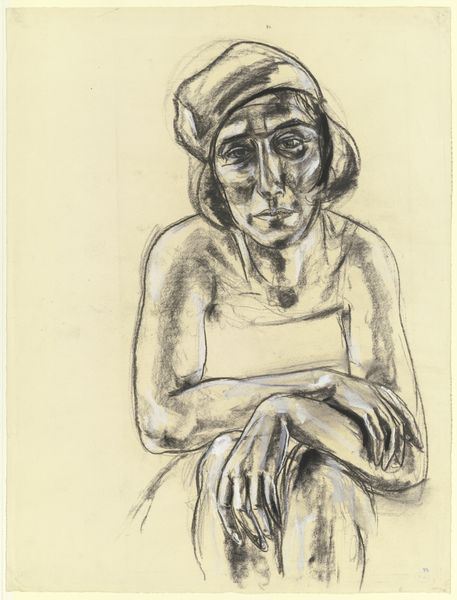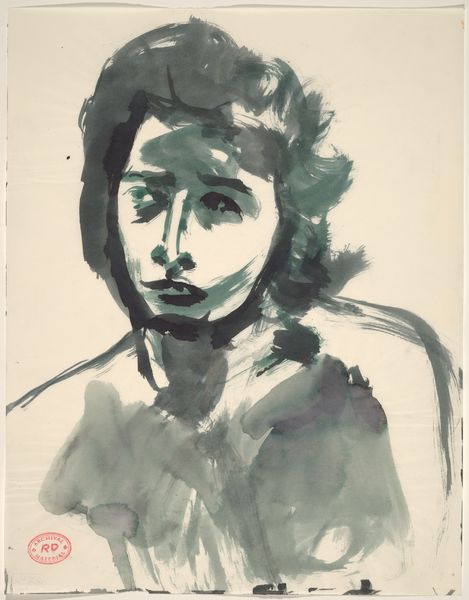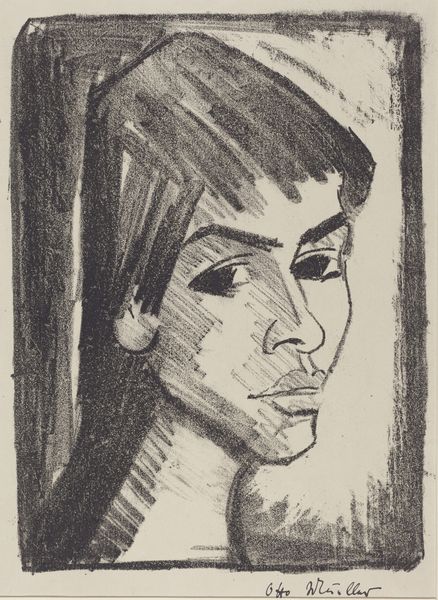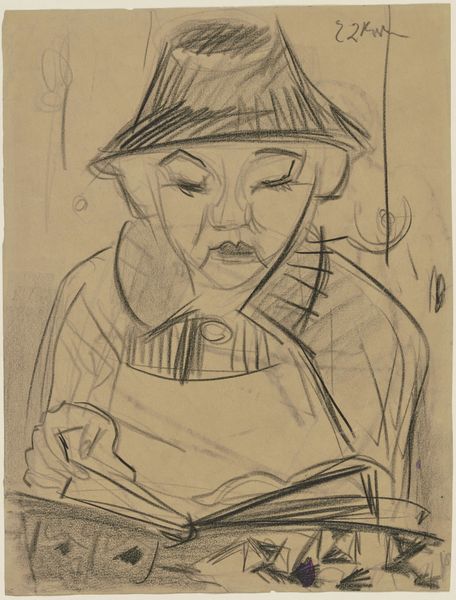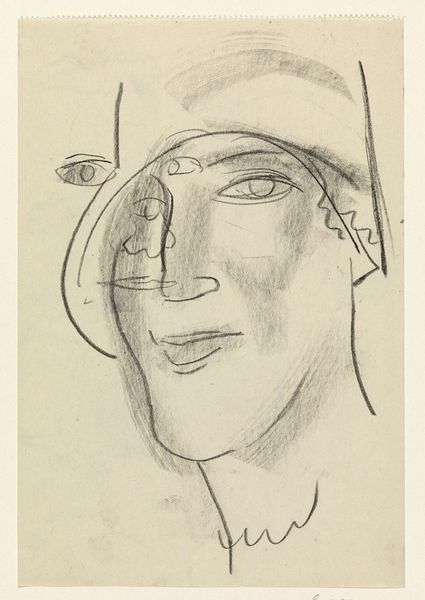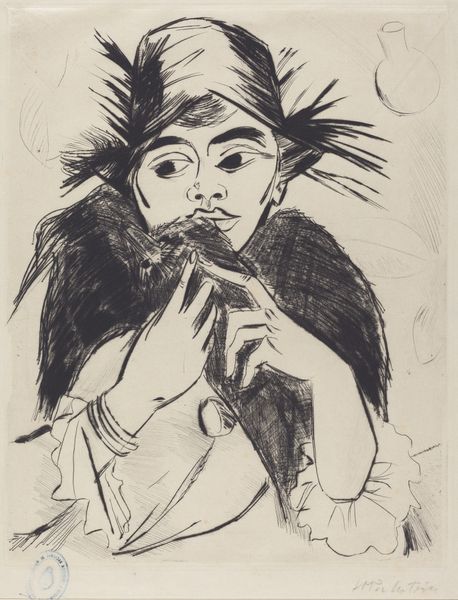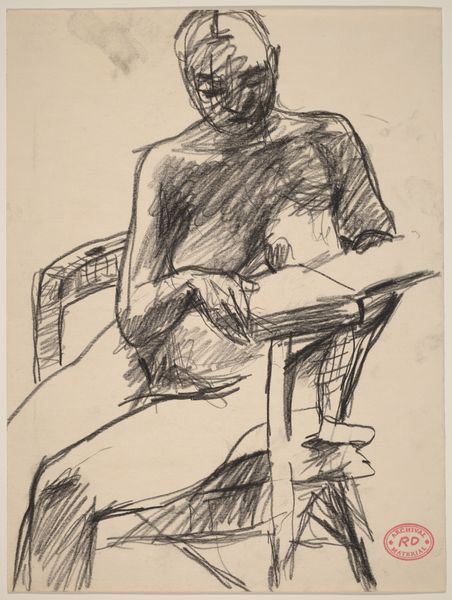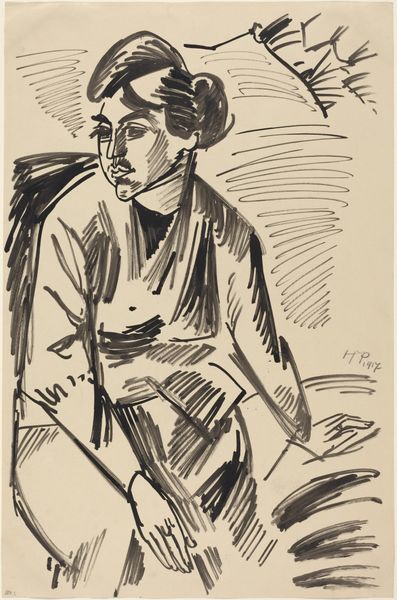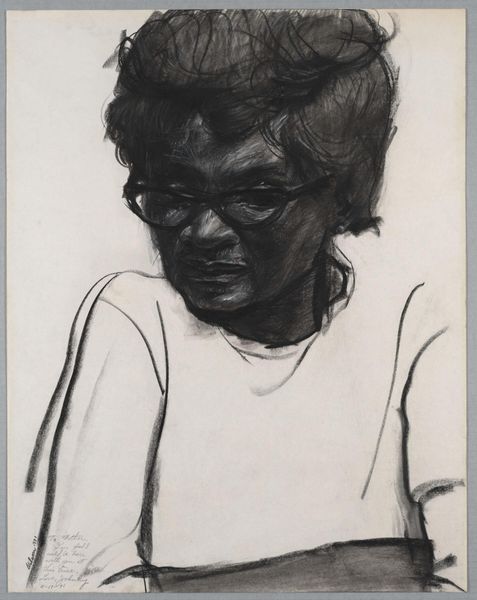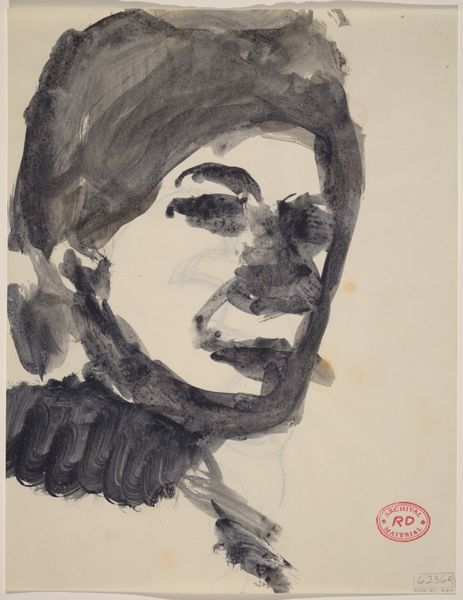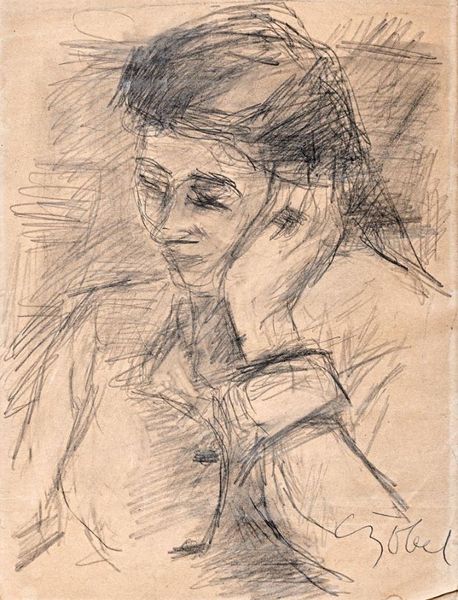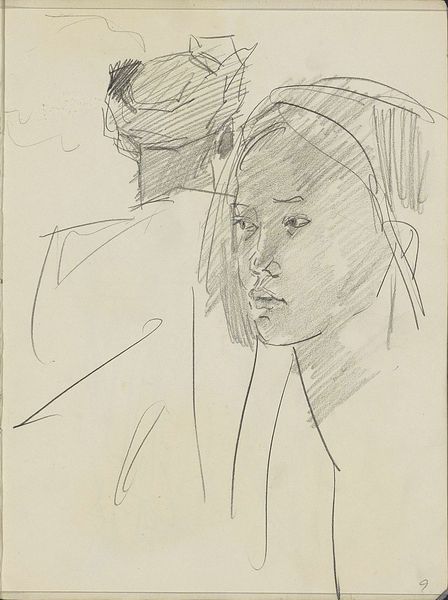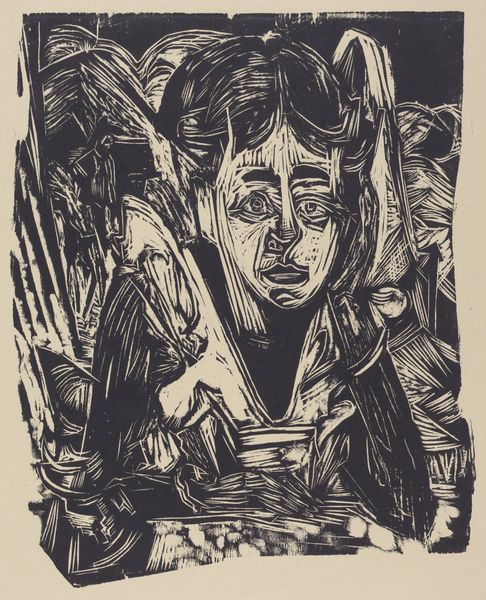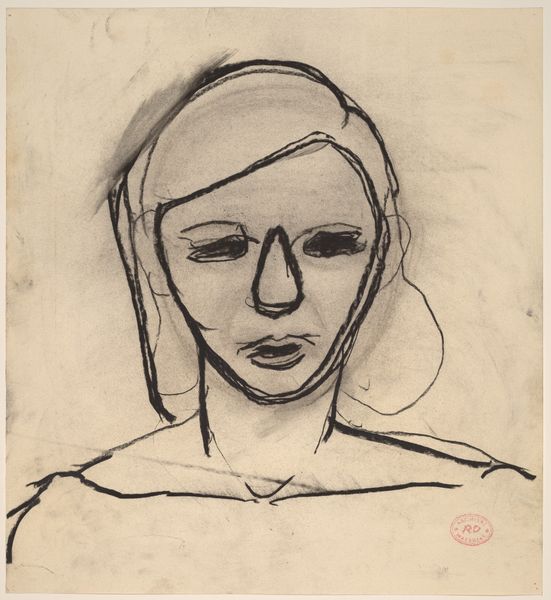
drawing, graphite
#
portrait
#
drawing
#
caricature
#
german-expressionism
#
figuration
#
pencil drawing
#
expressionism
#
graphite
#
portrait drawing
Dimensions: overall: 41.9 x 32.1 cm (16 1/2 x 12 5/8 in.)
Copyright: National Gallery of Art: CC0 1.0
Curator: I’d like to draw your attention to Max Pechstein’s "Head of a Woman," created in 1920 using graphite pencil. Editor: Immediately, the starkness strikes me. It's a portrait, yes, but rendered with such directness in graphite. The angles are almost brutal, less about beauty and more about... presentation, or even production of form. Curator: Precisely. Pechstein, deeply involved in the Expressionist movement, consistently challenged conventional modes of representation. This drawing isn’t just a portrait; it's a statement about the social constraints placed on women at the time, especially their commodification as muses versus recognized as artists in their own right. Note the stylized headdress—is it adornment, or a marker of ethnic or cultural identity, consciously manipulated within a Western gaze? Editor: I’m intrigued by the labor involved in producing such a work. Graphite, of course, is readily accessible, but the artist’s hand… Look at the layering of lines to create shadows and volume. There's a conscious manipulation of a very basic material to communicate the artist's vision, one that probably relies on the model labor in staying still. How much of that physical presence translates to her own expression or experience, within the frame? Curator: That brings us back to considering gender dynamics of that time, post-World War I, a period rife with societal shifts and evolving gender roles. Consider also Pechstein’s complicated relationship with German Expressionism. While celebrated, he was often criticized for exoticizing non-European cultures he encountered during his travels. Was he truly breaking from tradition, or perpetuating colonial narratives in his own way? Editor: Absolutely. It's a good point. The use of such an accessible, common medium also invites us to ponder what’s deemed worthy of ‘high art.’ Is this sketch just a preparatory study, or is it meant to elevate graphite to challenge more traditional media such as oil painting? How does the use of drawing itself contribute to or detract from how we regard the artwork today? Curator: Ultimately, “Head of a Woman” opens up numerous dialogues. The figure's gaze alone makes the drawing haunting, especially when we consider her representation in relation to the cultural and gendered power dynamics at play. Editor: Yes, it also makes you consider labor beyond what we immediately perceive—the material from the earth, the graphite manufactured into drawing medium, Pechstein’s effort to put lines on paper, and then us as consumers of this representation and legacy.
Comments
No comments
Be the first to comment and join the conversation on the ultimate creative platform.
